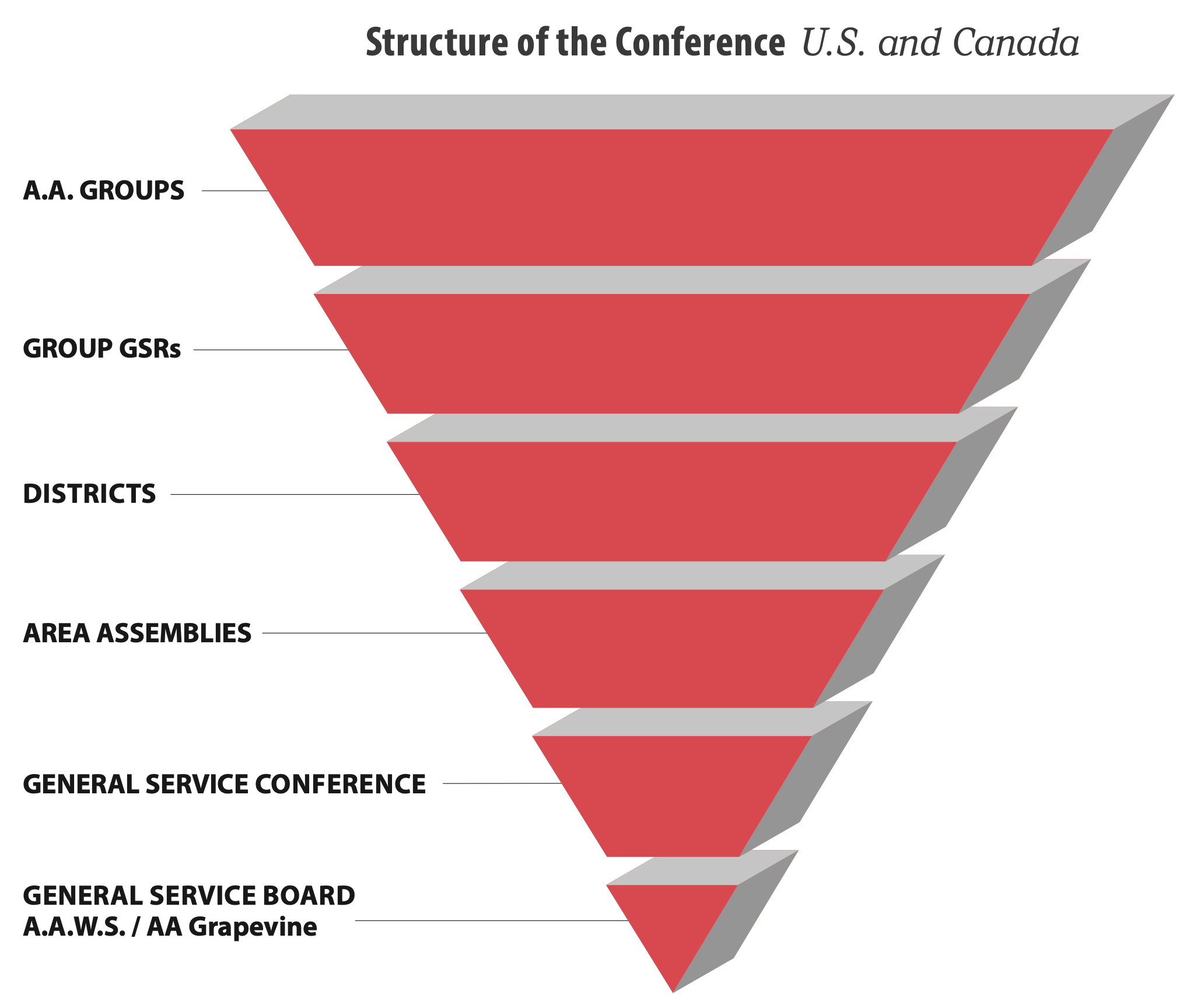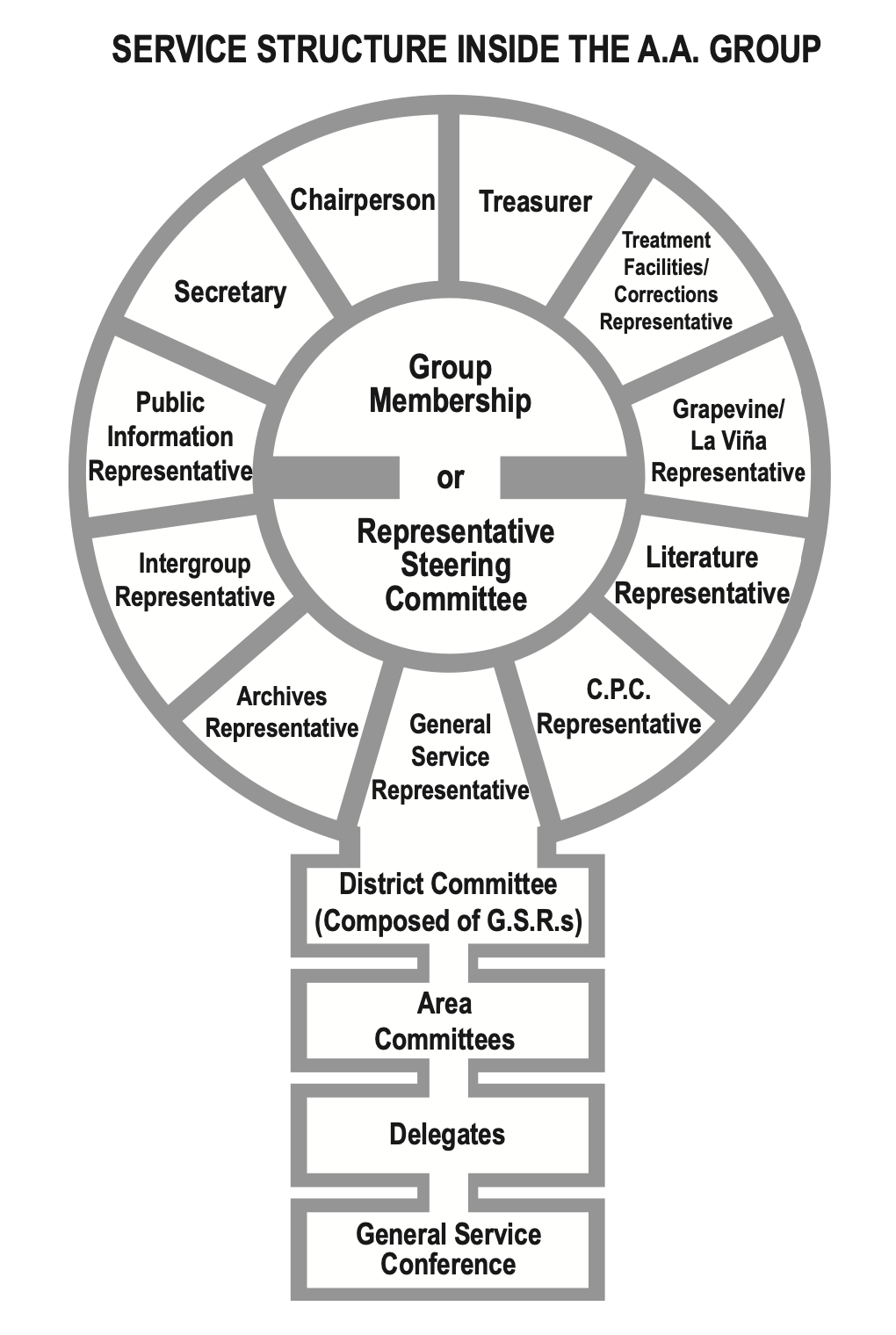General Service News
Town Hall for Online AA Groups
The Three Legacies Study Group and the Get Into Action Committee is hosting a Town Hall for Online AA Groups. Our own District 20 District Committee Member (DCM) Terry N., Area 48, New York.
District 20 News
Open committee positions! We need chairs and alternate chairs for most committees; one year of sobriety is suggested. Contact our GSR for more information.
Check the district website to stay up to date with our virtual district activities and visit our fellow online groups.
Attend our monthly District Meeting held on the last Tuesday of the month at 7:00pm EST. Meeting ID: 291 297 7780, PC: 011023 (meeting is 90 minutes)
How Can I Get Involved?
General Service Events Calendar
Contact
For more information please contact: gsr@globaleyeopener.org
Frequently Asked Questions (FAQ)
1. What is A.A.’s Legacy of Service?
Our Twelfth Step — carrying the message — is the basic service that the A.A. Fellowship gives; this is our principal aim and the main reason for our existence. Therefore, A.A. is more than a set of principles; it is a society of alcoholics in action. We must carry the message, else we ourselves can wither and those who haven’t been given the truth may die. Hence, an A.A. service is anything whatever that helps us to reach a fellow sufferer — ranging all the way from the Twelfth Step itself to a ten-cent phone call and a cup of coffee, and to A.A.’s General Service Office for national and international action. The sum total of all these services is our Third Legacy of Service. (AA Service Manual, pg. 1)
2. What’s General Service all about?
The general service structure ensures that the groups in A.A. have a voice in the affairs of their own Fellowship. It is this, and yet, it is much more than this. A.A. was there for you when you needed it. The work you do as a trusted servant in general service helps ensure that A.A. will be there when alcoholics come for help in the future. (AA Service Manual, pg. 6) It might be helpful to think of general service as a kind of dialogue or communication between the groups, the trusted servants working on their behalf, and the General Service Office and General Service Board as they all manage the Fellowship’s affairs. Questions, concerns, viewpoints and proposals travel from the groups “down the triangle”— and information and proposals head back “up the triangle” to the groups. (AA Service Manual, pg. 4)
Every area elects a delegate to go to the General Service Conference in New York each April. The Conference represents a vast pool of A.A. experience gathered for decades from A.A.s all over the world. Every A.A. group can share its experience with other groups through its area delegate to the Conference. The 93 elected area delegates make up over two-thirds of the Conference, but there are others at the annual Conference session, too: the 21 trustees of A.A.’s General Service Board; the directors of A.A. World Services, Inc. (the legal entity responsible for the business of the General Service Office) and the A.A. staff members at GSO; and the directors of The A.A. Grapevine, Inc., as well as the A.A. staff of the magazine. Every A.A. group has a voice at the Conference if it has an active GSR! (Information is copied from area72aa.org with their permission. Original content located here.)
3. How did it come about?
Bill W. came up with a bold solution. The early leadership of A.A. would be succeeded not by new people, but by the collective conscience of the groups in A.A. Bill proposed a plan to create a “service structure” to facilitate Twelfth Step work across the country and around the world. This structure would bring to bear the collective conscience of the groups on matters affecting “A.A. as a whole.” At the heart of this structure would be the A.A. groups themselves, providing both the conscience and financial support for A.A. services throughout the Fellowship. It would be a structure to take the place of government in A.A., ensuring that the full voice of A.A. would be heard. Today, we call the service structure that developed from Bill’s plan the General Service Conference structure, or simply, general service. Bill envisioned one General Service Conference serving the entire Fellowship worldwide. Instead, a joint U.S./Canada Conference emerged first. As A.A. continued to grow, other conferences formed, such as the General Service Conference of Great Britain and the General Service Conference of India. Each is autonomous and no Conference answers to another, although there exists a spirit of cooperation. (AA Service Manual, pg. 2)
4. How is the US and Canada Conference Organized?
Areas - The US and Canada Conference is organized by geographical areas. There are 93 areas within the Conference. Each area elects one Delegate to represent the area in matters effecting AA as a whole. The Global Eye Opener is affiliated with Area 48, New York. See map below:
Districts - Areas are divided into two types of districts, geographical and linguistic districts. Last year, the General Service Conference voted to include online groups into the service structure and a third type of district, online district, is being formed. The Global Eye Opener is affiliated with the online District 20. There are currently three online districts in the US and Canada.
Groups - A.A. is shaped by the collective voice of its local groups and their representatives to the General Service Conference, which works toward unanimity on matters vital to the Fellowship. Each group functions independently, except in matters affecting other groups or A.A. as a whole. (The AA Group Pamphlet, pg. 10)
5. Why was Global Eye Opener affiliated with Western Washington?
Since we didn't have virtual areas for online groups, each online group must choose a geographic area with which to affiliate. The Global Eye Opener’s General Service Transition Committee (GSTC) conducted research of the AA areas across the US and Canada to find an area that was interested in including online groups into their service structure. The GSTC group conscience was that at this time in our history, Area 72 was the best fit for the Global Eye Opener because they had created a virtual district and were welcoming of online groups. Now, Global Eye Opener is part of Area 48, New York.
6. What is the role of the groups in AA?
“Alcoholics Anonymous has been called an upside down organization because “the ultimate responsibility and final authority for world services resides with the groups — rather than with the trustees, the General Service Board or the General Service Office in New York.” “Twelve Concepts For World Service Illustrated” The entire structure of A.A. depends upon the participation and conscience of the individual groups, and how each of these groups conducts its affairs has a ripple effect on A.A. everywhere. Thus, we are ever individually conscious of our responsibility for our own sobriety and, as a group, for carrying the A.A. message to the suffering alcoholic who reaches out to us for help. (The AA Group Pamphlet, pg 10)
7. What is a home group?
For most A.A.s, membership in a home group is one of the keys to continuing sobriety. In a home group, they accept service responsibilities and learn to sustain connections with other recovering alcoholics. The home group affords individual A.A.s the privilege of voting on issues that affect the Fellowship as a whole; it is the very basis of the service structure. While many A.A. members attend other groups as well, the home group is where they participate in business meetings and cast their vote as part of the group conscience of the Fellowship as a whole. As with all group conscience matters, each member has one vote. (AA Service Manual, pg 7)
8. What is the service structure within the group?
In A.A. groups, these trusted servants are sometimes called “officers” and usually are chosen by the group for limited terms of service. As Tradition Two reminds us, “Our leaders are but trusted servants; they do not govern.” Each group determines the minimum length of sobriety for A.A. members to be eligible for any position (or office). The general guideline might be stable sobriety of six months to a year, or longer. This chart shows possibilities for service at the group level. Read The AA Group. (AA Group Pamphlet, pg. 20)
9. Why did Global Eye Opener decide to join the service structure?
Being part of the service structure gives the Global Eye Opener a voice in the affairs of the Fellowship through our General Service Representative (GSR). The GSR is the link between the group and “A.A. as a whole” and serves as a channel through which news, information, opinions and ideas can flow back and forth. Also, by becoming part of an area and district, GEO group members have many opportunities to do 12 step work by carrying the message outside the group to reach the still sick and suffering alcoholics. Through our district and area committees, we can do what one group alone cannot do; have a unified, coordinated message. The district and area committees coordinate service so that every group doesn’t have to contact facilities and organizations individually.
10. How Does General Service Work within the Global Eye Opener?
Agenda items are like motions or suggestions from AA members and groups on suggested changes to our literature and fellowship. Each motion is accompanied by background information. The Delegate selects questions and asks us for our informed group conscience. The group studies the questions and background information and develops a group conscience that is shared with the Delegate. The Delegate then takes that information to the General Service Conference where the agenda items are voted on. The Delegate reports back to the group in May or June on what happened at the Conference.
11. Who do I contact to learn more?
For general questions, talk with our group GSR or Alternate GSR. Or, you can email them at gsr@globaleyeopener.org or altgsr@globaleyeopener.org.
For specific questions about a committee, talk with our group representative or contact the district chair or alternate chair to learn more about committee activities.
______________________________
Content from the A.A. Service Manual and the pamphlet The A.A. Group is reprinted from AA.org, with permission of A.A. World Services, Inc.
This information is displayed with the permission of A.A. World Services, Inc., in accordance with the A.A. World Services, Inc. content use policy.

